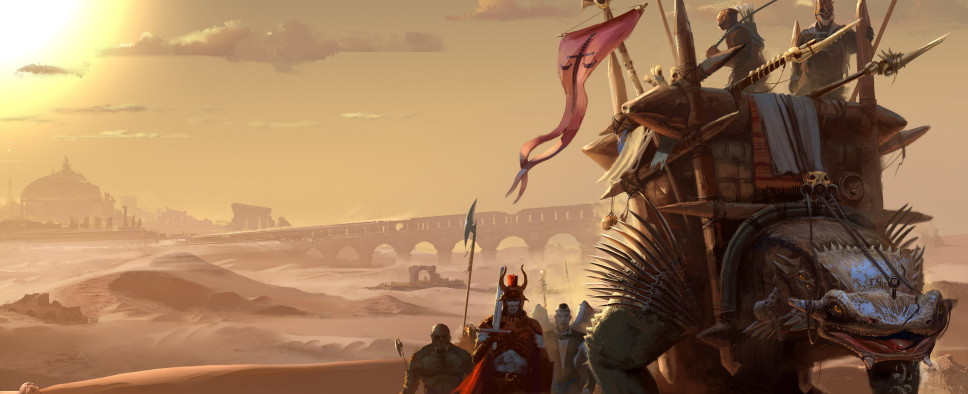Vagrus: The Riven Realms - Glossary and Back-end Improvements
-
Category: News ArchiveHits: 1218

Lost Pilgrims Studio is currently working on a free DLC for their post-apocalyptic fantasy RPG Vagrus: The Riven Realms, and in the meantime, they bring us this developer blog outlining some recent improvements to the in-game Glossary and the game's back-end functionality.
Check it out:
Hey everyone,
Revamping campaign map movement and scouting into a sleeker system finally allowed us to move on to other things our players have expressed the need for. First off, many of you wanted more information and clarity on gameplay mechanics to be able to better understand its complexity – rightly so. That is why we are publishing a Beta version of the new Glossary.
The Glossary
This feature doesn’t contain story or lore content, but is aimed at clarifying game mechanisms and UI segments. It is accessible in the game by pressing ‘G’ or clicking on the eye icon in the top-right corner of the screen.
The Glossary is structured into seven main categories representing the main facets of Vagrus’s gameplay mechanics. These categories are Story, Combat, Comitatus, Factions, Trading, Settlements, and Campaign Map. All of these have subcategories, which in turn have their own subcategories, making the Glossary appear in a three-tier structure. Thus, when you browse the Glossary, you can read more about a certain topic by navigating to subcategories, after which you can easily get back to higher levels.
Furthermore, entries contain references to other entries of relevance. You can just click on a highlighted word or expression to navigate to its entry. There is also a search function that comes in handy when you know what you are looking for, but you’re not sure where to find it.
As stated above, the Glossary is still very much in Beta; by no means do we consider it final. Therefore, we would appreciate your feedback so that we can improve its usefulness to players (the easiest way to provide feedback is always our discord server or via the bug-reporting in-game tool).
Unity Addressables
There is something else we have been spending a lot of time on, and probably most of our players won’t even realize its outcome. It is about the Unity Addressables function. Essentially, it assigns keys to assets (most prominently art), acting as a reference ID, enabling us to move art assets out of the so-called Resources folder in Unity. The primary purpose of using Addressables is for game assets not to take up memory when they are not being used, only when they are.
This is because the way it used to be was sub-optimal and hindered the porting of the game to Android and iOS. Doing things this new way will allow the game will run more smoothly on more low-end PCs and eventually, on smaller devices, such as tablets. In practice, this means that location arts in settlements and events or combat backgrounds along with all character assets including animations, icons, and portrays are now treated as addressables, which required a lot of restructuring.
We have been working on this for almost two months along with other tasks and we dare say we are more than content with the outcome. This way, we managed to reduce the initial loading time, the game’s memory usage, and the installed game itself is now 3.4 GBs instead of the 4.6 GBs it used to be.
We are definitely planning to pursue further optimization not only in this direction but also to achieve a more enjoyable gameplay experience on smaller displays. Furthermore, we are going to explore the possibility to add controller support benefiting devices such as Steam Deck – or eventually other consoles as well.
With all that said, we are gearing up for the next (free!) content DLC, Seekers of Knowledge. More on that very soon. Until then, stay tuned and conquer the wasteland!
That’s all for today, so for now – stay tuned, stay safe, and conquer the wasteland!
The Lost Pilgrims Team

